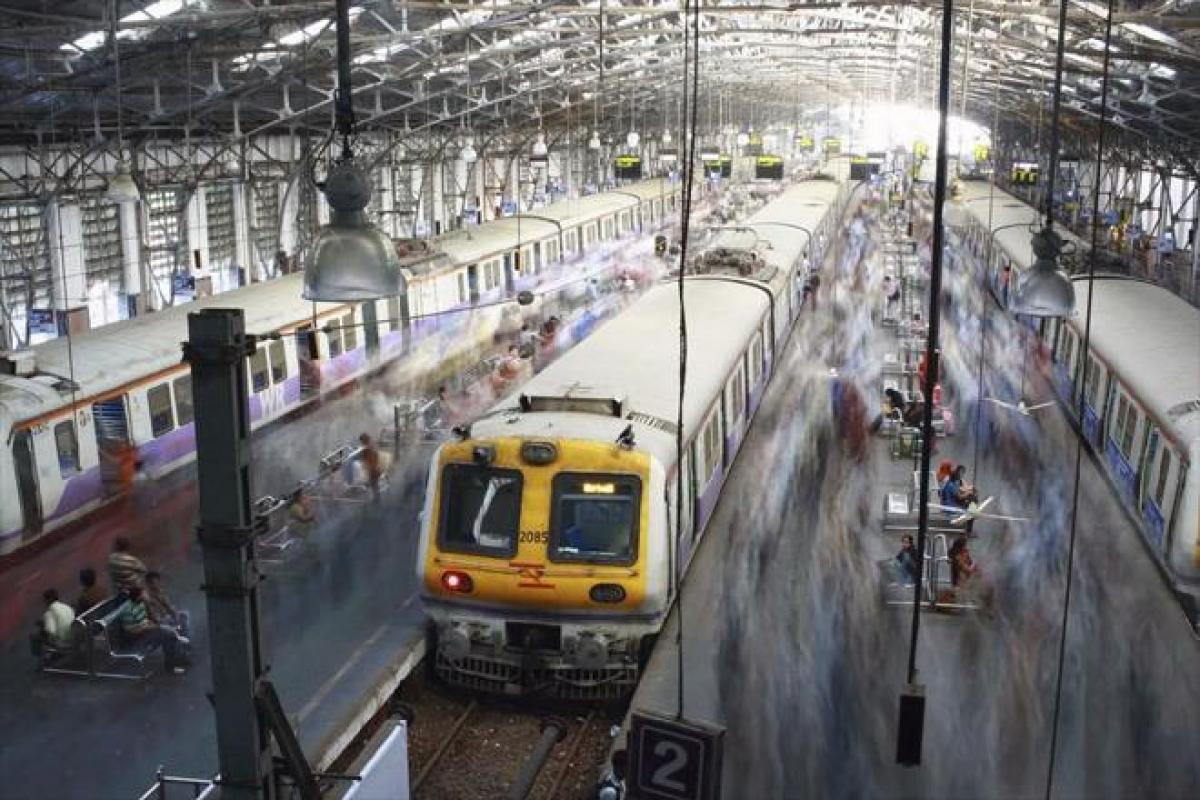Live
- NASA Tracks Five Giant Asteroids on Close Approach to Earth Today
- Pushpa 2 Hits ₹1000 Crore in 6 Days: How It Compares to Other Top Indian Films
- Vivo X200 and X200 Pro Launched in India: Price, Specifications, and Features
- Nitin Gadkari Admits Feeling Embarrassed at Global Summits Over Rising Road Accidents in India
- Comprehensive Review on Indiramma Housing Survey and Welfare Initiatives Conducted via Video Conference
- Jogulamba Temple Records Rs 1.06 Crore Hundi Revenue in 150 Days
- Opposition Slams ‘One Nation, One Election’ Bill as Anti-Democratic; BJP Allies Support the Move
- Celebrate Karthigai Maha Deepam Virtually with Sri Mandir’s LIVE Darshan Experience
- BJP Extends Support to Samagra Shiksha Abhiyan Employees' Strike, Demands Immediate Regularization and Welfare Benefits
- Dr. M. Priyanka Stresses Quality Education, Nutritious Meals, and Cleanliness in Schools
Just In

Delays in completing railway projects resulted in cost overruns of Rs.1.07 lakh crore ($16.4 billion) - equivalent to the yearly salary bill of its three million employees - according to an IndiaSpend analysis of a December 2015 audit report.
Delays in completing railway projects resulted in cost overruns of Rs.1.07 lakh crore ($16.4 billion) - equivalent to the yearly salary bill of its three million employees - according to an IndiaSpend analysis of a December 2015 audit report.
As of March 2014, the railways needed Rs.1.86 lakh crore ($28.6 billion) to complete these projects, said the report, "Status of ongoing projects in Indian Railways", conducted over five years (2009-14) by the Comptroller and Auditor General of India (CAG).
Of 442 incomplete projects - new railway lines, gauge conversion and doubling - only 156 (35 percent) had deadlines, but despite targets, 75 were incomplete after more than 15 years.
The combined cost overrun of projects with a budget of more than Rs.150 crore (319 of 442) was Rs.1.01 lakh crore ($15.5 billion); for projects less than Rs.150 crore (123 of 442), the combined cost overrun was Rs.5,614 crore ($0.89 billion), the report said.
Three projects unfinished after 30 years; 22 not started, although cleared 16 years ago
Of the 75 projects incomplete for more than 15 years, three were unfinished after 30 years. Further, 22 projects had not started, although some were cleared up to 16 years ago.
Here are two examples:
1. An 83.74-km railway line from Nangal Dam in Punjab's Rupnagar district to Talwara in Hoshiarpur district: Cleared 34 years ago, the 43.91-km first phase of the line (from Nangal Dam to Amb Andaura, a town in Himachal Pradesh) was completed after nine years, in 1991. The 17-km second phase, from Una in Himachal Pradesh to Charuru Takrala, a village in Una district, started in 1998 and opened seven years later. There has been no construction since, because no money was available. Until March 2014, Rs.383.89 crore had been spent on 46-km and 45 percent of the line is incomplete, the CAG report said.
2. A 42-km railway line from Howrah, West Bengal, to Amta in the same state, with a 32-km branch line to Champadanga, a town in Hooghly district: Cleared for construction 45 years ago, the first stretch of 24 km from Howrah to Bargachhia took nine years; the second 18-km stretch, from Bargachhia to Amta, was stalled for several years. Construction restarted in two phases, in 2000 and 2004, but was never completed because land could not be acquired between Bargachhia to Champadanga. In 2014, the railways wanted the project cancelled. But it is presently considered "ongoing", with an anticipated "throw forward" cost - meaning the money required for completion - of
Rs.356 crore.
These are extreme examples, but they reveal how projects are started without clear plans and preparations; many fail the railways' own financial standards.
Only 30 percent of projects meet financial requirements, rest are unviable
A provision of the Indian Railway Finance Code states: "No fresh investment proposal would be considered financially justifiable unless the net gain (rate of return) expected to be realised as a result of the proposed outlay, after meeting the working expenses or the average annual cost of service, is 14 percent or more".
The rate of return is based on the earnings from anticipated traffic. Only 30 percent of the incomplete projects had a net gain or rate of return of 14 percent, whereas 126 projects had a negative rate of return. This means 70 percent of the projects were not financially viable.
The CAG report included recommendations for future projects. Some of them:
Indian Railways need to revisit all projects that are incomplete after more than 15 years and assess their financial viability.
Indian Railways need to prioritise projects and ensure these are adequately funded, so they can be completed on deadline.
The Railway Board and zonal offices need to monitor projects better, so no more money is wasted.
By Devanik Saha
(In arrangement with IndiaSpend.org, a data-driven, non-profit, public interest journalism platform. Devanik Saha is a New Delhi-based freelancer. The views expressed are those of IndiaSpend. The author can be contacted at [email protected])

© 2024 Hyderabad Media House Limited/The Hans India. All rights reserved. Powered by hocalwire.com







